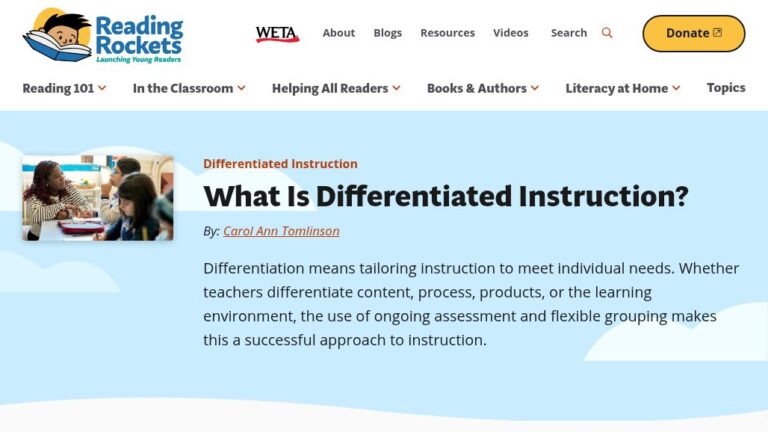Differentiation means tailoring instruction to meet individual needs. Whether teachers differentiate content, process, products, or the learning environment, the use of ongoing assessment and flexible grouping makes this a successful approach to instruction.
Examples of differentiating content at the elementary level include the following:
- Using reading materials at varying readability levels;
- Putting text materials on tape;
- Using spelling or vocabulary lists at readiness levels of students;
- Presenting ideas through both auditory and visual means;
- Using reading buddies; and
- Meeting with small groups to re-teach an idea or skill for struggling learners, or to extend the thinking or skills of advanced learners.


